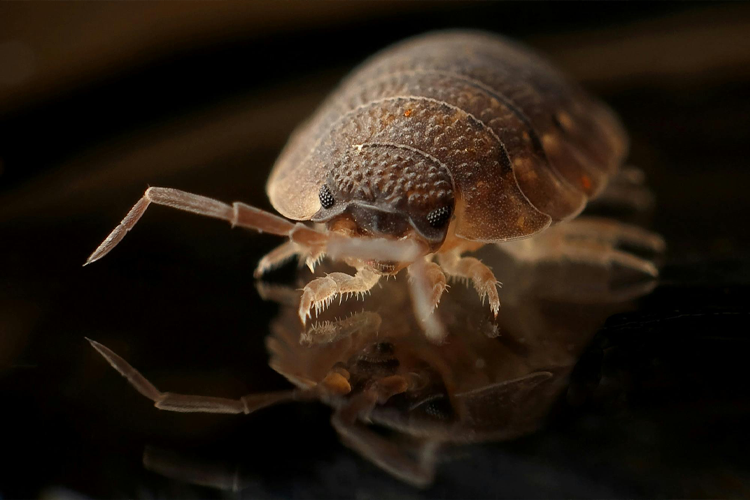Sorts Of Insect Control: Which Method Is Right for Your Invasion?
When faced with an insect infestation, the selection of a suitable method for pest control is critical in properly managing the situation. By checking out the numerous kinds of insect control methods available, individuals can make educated decisions customized to their one-of-a-kind situations, making sure a much more reliable and sustainable outcome in parasite obliteration.
Chemical Bug Control
Chemical bug control entails the use of artificial or naturally acquired chemicals to manage and eradicate pest populations efficiently. This technique is commonly utilized in agriculture, forestry, and residential setups to fight a vast array of insects, including pests, rodents, and weeds. Using chemical pesticides can give quick and targeted solutions to pest invasions, making it a preferred choice for several people and companies.
Among the key advantages of chemical parasite control is its capacity to quickly eliminate insects, reducing the risk of damages to plants, building, and human health. By utilizing specific chemicals that target certain bugs, this approach can properly regulate infestations while reducing injury to useful microorganisms and the environment when applied properly.
However, making use of chemical bug control likewise increases worries about prospective adverse impacts on non-target species, water sources, and human health. It is important to adhere to safety and security guidelines, apply chemicals sensibly, and take into consideration alternate parasite control approaches to minimize these threats and make certain lasting pest administration methods.
Biological Parasite Control
Organic insect control, likewise known as biocontrol, makes use of living organisms to take care of and lower parasite populations naturally. This method takes advantage of the power of nature to regulate bugs without the need for artificial chemicals. Biocontrol can entail the intro of natural enemies of the insect species, such as predators, bloodsuckers, or virus, to reduce parasite populations. By using the parasite's natural killers or virus, organic parasite control supplies a eco-friendly and sustainable service to pest monitoring.

Mechanical Parasite Control
Making use of physical and hands-on approaches to take care of pest populaces, mechanical bug control supplies an alternative approach that does not depend on making use of living microorganisms or synthetic chemicals. This technique entails using obstacles, catches, or various other gadgets to physically hinder or eliminate pests. By blocking insect entry factors or establishing up catches to capture them, mechanical bug control can successfully reduce invasions without introducing chemicals into the atmosphere.
One typical instance of mechanical pest best termite pest control control is the use of mesh displays on doors and windows to avoid insects from going into buildings. This easy yet efficient technique functions as a physical obstacle, maintaining insects out while enabling appropriate ventilation. Additionally, tools like mousetraps, fly swatters, and ultrasonic repellents drop under the mechanical insect control group.
While mechanical insect control approaches can be labor-intensive and require normal tracking and upkeep, they provide a lasting and eco pleasant remedy for taking care of parasite infestations. By incorporating various mechanical strategies, homeowner can produce a detailed insect control strategy that reduces dependence on chemical pesticides.
Physical Pest Control

Some typical physical bug control methods consist of the use of obstacles such as webs or screens to avoid insect entry, catches to capture and get rid of parasites, and hand-picking to literally remove parasites from plants or frameworks. Furthermore, strategies like heat treatments can be utilized to control insects like bed insects by elevating the temperature to levels that are dangerous to the insects.
Physical pest control is specifically valuable in incorporated insect monitoring (IPM) strategies, where multiple pest control techniques are incorporated for reliable pest management while decreasing making use of chemicals. By using physical insect control techniques, people can efficiently attend to insect invasions with very little ecological influence.
Integrated Bug Monitoring
When executing physical pest control methods as component of dig this insect management techniques, Integrated Pest Administration (IPM) emerges as a thorough approach that leverages numerous strategies to efficiently regulate pest populations. IPM concentrates on long-term prevention of parasites via a mix of biological, cultural, physical, and chemical devices tailored to certain pest problems. you can find out more By integrating multiple control techniques, IPM intends to minimize the threats connected with insects while additionally minimizing reliance on chemical remedies.
One secret aspect of IPM is the emphasis on tracking and analyzing pest populations to figure out one of the most proper control methods. This proactive strategy permits early intervention and targeted approaches, bring about more reliable insect administration. Furthermore, IPM advertises eco pleasant practices by focusing on non-chemical control methods and just utilizing pesticides as a last resort.
Conclusion

By utilizing the parasite's natural killers or microorganisms, organic insect control offers a sustainable and eco pleasant option to pest administration. - Kings pest control Cincinnati Ohio
Making use of physical and manual approaches to manage parasite populaces, mechanical bug control provides an alternate technique that does not count on the usage of living microorganisms or synthetic chemicals.An effective strategy to handling pest populaces without relying on chemical or organic methods entails the use of physical parasite control methods.When implementing physical parasite control methods as component of pest administration strategies, Integrated Bug Management (IPM) arises as an extensive strategy that leverages different strategies to effectively manage pest populaces. Chemical insect control includes the use of pesticides, organic pest control utilizes all-natural killers, mechanical pest control includes physical obstacles, physical parasite control includes trapping or getting rid of pests, and integrated bug monitoring combines numerous methods for a holistic method to pest control.